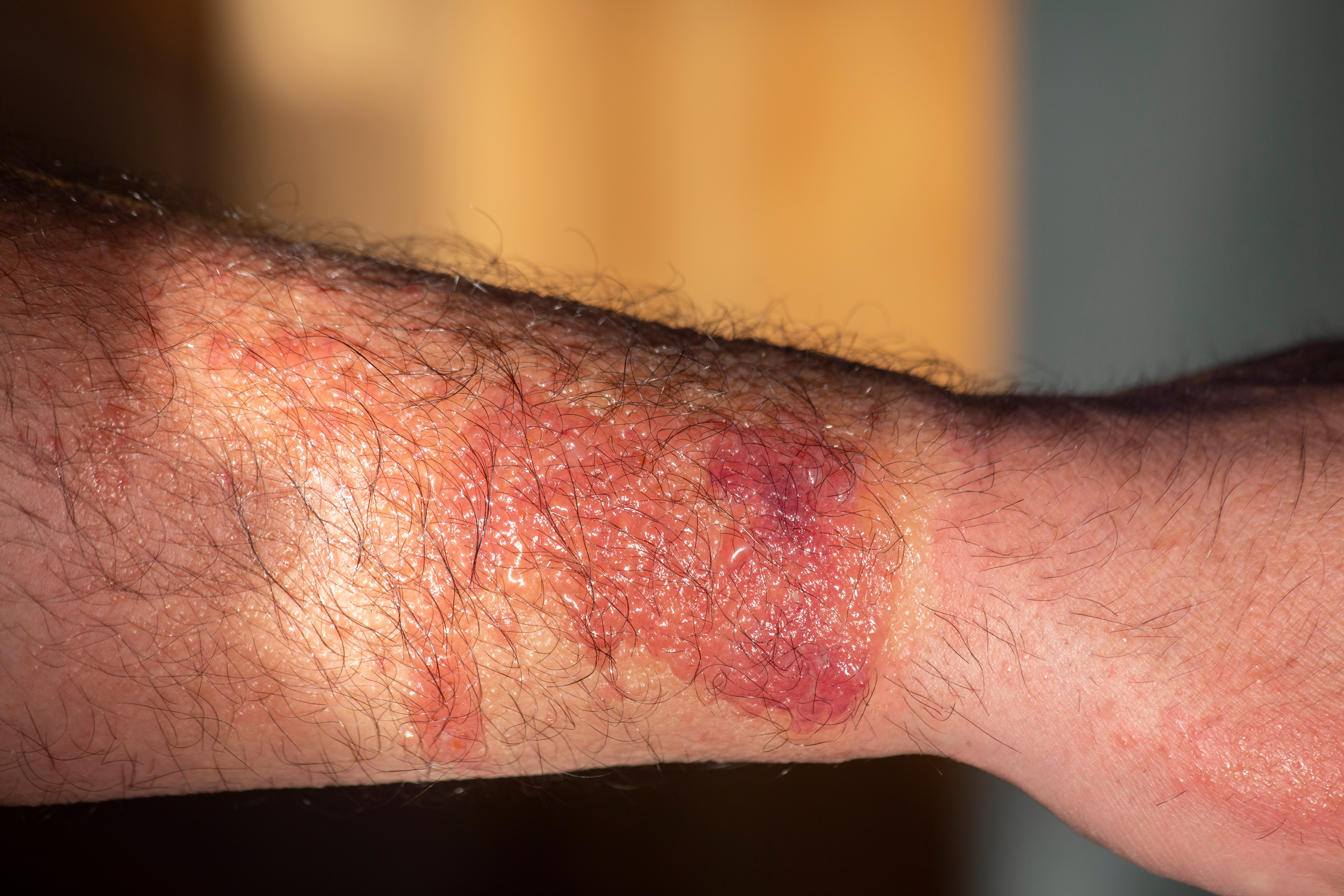- Maniam, G., Light, K. M. & Wilson, J. Margarita Burn: Recognition and Treatment of Phytophotodermatitis. J Am Board Fam Med 34, 398–401 (2021).
- Margarita Burn: Why Lime Juice and Sun Don’t Mix. Cleveland Clinic https://health.clevelandclinic.org/margarita-burn.
- The Unexpected Skin Risk of Summer Margaritas by the Pool. https://www.medpagetoday.com/popmedicine/cultureclinic/110388 (2024).
The Margarita Burn: A summer holiday phytophotodermatitis
Summer season is coming, and with it, time by the pool; but also possibly some more cases of “Margarita burn” or phytophotodermatitis.
Meadow grass dermatitis (Dermatitis bullosa pratensis) with a difference?
- Phytophotodermatitis is a non-immunological reaction that can occur when skin contaminated with phototoxins is exposed to ultraviolet light (usually direct sunlight).
- Some plants and fruits (especially citrus fruits) contain furanocoumarins, which can make the skin more sensitive to the sun.
- Phytophotodermatitis usually heals on its own without long-term consequences.
How do you recognise phytophotodermatitis?
Following direct skin contact with phototoxic substances and subsequent sun exposure, a rash may develop with an initial burning sensation and erythematous macules or patches that later blister and resemble second-degree burns, followed by asymptomatic hyperpigmentation that may persist for many months before resolving. Triggers can be phototoxic plant substances, often furanocoumarins and psoralens.1
The most common cause of phytophotodermatitis is contact with lime (juice) before or during sun exposure, as it contains furanocoumarins. A classic case report describes the development of this skin reaction in a young woman who handled these fruits in preparation for a cocktail party and then went swimming in a sunny pool.1 Wet skin, sweating and heat intensify the phototoxic reaction. People with light-coloured skin are most susceptible.
Careful anamnesis helps with differentiation
Reports on the internet describe that spilling mixed drinks containing strong citrus fruits on the skin can also be enough, for example on the beach; hence the name "margarita burn". A dermatologist at the Cleveland Clinic, Ohio, also sees these cases frequently when limes are cut and squeezed for beers at barbecues in the sun and splashes of them remain on the skin.2 She also recalls a patient who had a poison ivy-like rash on his forearms after mowing the lawn. It turned out that he had made guacamole beforehand and some of the lime had got on his skin before he went outside.2
Another possible cause is the consumption of foods containing high levels of furanocoumarin, such as celery soup.2 Furthermore, especially in the 1920s, people who wore perfumes and colognes containing bergamot oil, which is extracted from oranges containing furanocoumarin, were often affected.2
Buttercups, carrots, fennel, figs, hogweed, Pelea anisata (often used in Hawaiian flower wreaths), St John's wort, wild dill, wild parsley and wild parsnips can also have a phototoxic effect.2
 Intensive contact when gardening or pruning plants is another possible cause (the phytophotodermatitis shown in the picture was caused by contact with a fig tree on a sunny day).
Intensive contact when gardening or pruning plants is another possible cause (the phytophotodermatitis shown in the picture was caused by contact with a fig tree on a sunny day).
Not much sun exposure is needed to trigger this reaction - five minutes can potentially be enough.3 The phototoxic reaction is responsible for progressive cell death, which manifests itself in the form of the developing rash. The diagnosis is usually clinical, but there is potential for confusion with other common skin reactions such as solar erythema, contact dermatitis (type IV hypersensitivity reaction), polymorphous light dermatosis or drug-induced photosensitivity.1 Therefore, new substances and cosmetics with which the patient has had contact should be asked about, as well as new medications (including NSAIDs).
Symptomatic treatment according to severity
A careful medical history is important in order to avoid unnecessary diagnostic or therapeutic measures. In general, phytophotodermatitis disappears by itself without long-term consequences and does not require treatment.
The most important point is of a preventive nature: after skin contact with phototoxic substances, these should be washed off before they can have a long-lasting effect on the skin. It is also obvious that patients should avoid photosensitising substances and sun exposure immediately after such a reaction in order to promote faster fading of the affected areas (re-exposure can cause hyperpigmented areas to darken).2
Otherwise, treatment depends on the severity of the symptoms. The affected areas can often be sensitive to pain and sometimes also burn intensely. Cold, wet compresses or flannels can help with mild symptoms. For moderate symptoms, corticosteroids or antihistamines can be used for a short time to alleviate the symptoms. In severe cases, admission to a burns unit may be necessary, e.g. if more than 30 per cent of the body surface is affected or if severe inflammation and necrosis develop.1